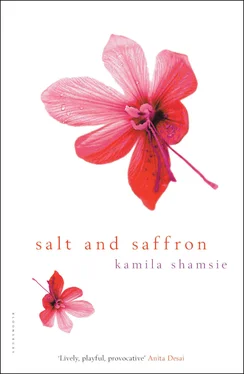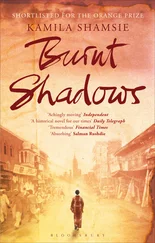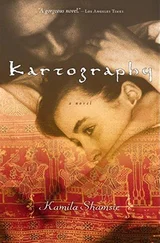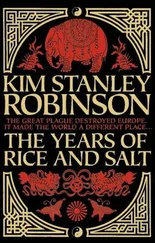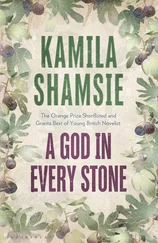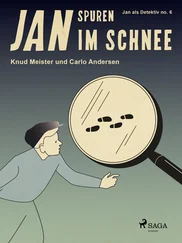‘You see, I have a photograph of her, and of your grandfather, on my wall,’ Baji said. ‘Despite what I said earlier. Don’t think my feelings are one-dimensional. Don’t think you can dismiss me as an embittered old woman.’
‘Baji,’ Samia said. ‘Please.’
‘That’s all I’m going to say about it. Now come and sit down, Aliya.’ Baji waved me over to the floor cushion beside her. I hadn’t seen Rehana re-enter the room, but there she was, helping Samia pull a coffee table a little closer to Baji, a long roll of paper under her arm.
‘I want to register my disapproval of this,’ Rehana said.
‘Yes, yes, you’ve done that. Now lay it out.’
‘You know about Babuji, of course,’ Baji said, motioning to Rehana to hand me a cup of tea from a trolley which had appeared without calling any attention to itself. I nodded my thanks to Rehana, and nodded a yes to Baji. Babuji was the keeper of the Dard-e-Dil family tree, as his father had been before him and his grandfather before that. It was said (which means none of my relatives in Pakistan wanted to admit to being the original teller of this tale because it implied contact with the Indian relatives) that Partition and the subsequent Age of Frequent Flyers had in no way impaired Babuji’s family’s meticulous record-keeping, and all Dard-e-Dil births and deaths made their way to the family tree, regardless of bristling borders.
‘This is a copy — a pruned copy — of the family tree, as recorded by Babuji,’ Rehana said, placing the paper on the table and unrolling it. This was a pruned copy? The coffee table must have been about four feet by four feet, and still the edges of the paper curled off three sides of the table and rolled down to the floor. There seemed to be some vastly elaborate colour scheme at work, involving purples, greens, yellows, reds, blues and a whole range of colours and shades besides. It seemed that those who were directly descended from the first Nawab via the patrilineal line had their name inked in purple, but what the other colours were supposed to signify I didn’t know. They probably indicated how far you had strayed from being the offspring of a direct male descendant. Yes, true enough. My grandparents’ generation was hanging over the edge of the table, but I could just make out Dadi’s name in blue. Her mother was red, and you had to go back a generation further to locate Dadi’s purple grandmother. How Dadi must hate that! But it must be some comfort that Akbar’s bloodline allowed Dadi the privilege of purple children. Samia and my generation was hidden from view, but I didn’t need to see our names to know Samia’s direct line hadn’t been purple since her great-great-grandmother. I was purple, but it appeared my children would be red unless I married a fellow purple. I wondered, If I were to marry a non-purple Dard-e-Dil, would my children still be red? Or was there a maroon or something for such cases? Why should it matter, either way?
‘Are these what I think they are?’ Samia pointed to a pair of black stars marking two names halfway down the tree. Now that she had pointed it out I could see pairs of starred names scattered across the paper, their familiarity rendering Samia’s question rhetorical. The not-quite-twins. As a child, I had inked those names on to my skin after a hot bath, my pores thirsting for that spiral of legend wrapped around my limbs.
‘This is the saddest of all the twin stories.’ Rehana’s thumbnail underlined the starred words ‘Inamuddin’ and ‘Masooma’.
Baji sighed and laid a hand on my shoulder. ‘What we are, we are.’
Baji was clearly like Dadi in one thing at least: she could state the obvious and make it sound like revelation.
‘Although maybe I only think that because I’m an architect,’ Rehana added.
Inamuddin and Masooma were twins born on either side of midnight, almost three hundred years before Akbar and his brothers performed that feat with an added twist. The twins’ uncle, Nawab Hamiduzzaman, aware of the curse of not-quite-twins, ordered the royal physician to poison the babies and ascribe the deaths to natural causes. Someone should have told Hamiduzzaman the story of Oedipus. Or of Lady Macbeth, perhaps. Because after the deed was done, old Ham could not sleep. He could not sleep and he could not pray and he could not peel the taste of poison from his lips. Until at last a man with the dust of distance on his feet and the gleam of prophecy in his eyes won entry into the Nawab’s presence and, bending closer than close, whispered a means to redemption. And it was this: raze to the ground the mausoleum you have just started building for the bones of your ancestors and your descendants and those who come in-between. Make that land a holy shrine for pilgrims from every everywhere.
You may wonder, Then what? And you may wonder, How did that lead to a fall in the family’s fortune? I’ll say this: Think of the Mughals. Think of an image that captures and preserves the glory of the Mughals, and if you have any sense of anything you’ll say the Taj Mahal. Well, the fact is, Shah Jahan bought — in secret and in gold — the plans to that Dard-e-Dil mausoleum from the keeper of the Dard-e-Dil archives, and the only thing he changed when he had the plans copied for the benefit of the contractor was the name. But we know, though you’ll laugh, that Taj Mahal is, was, should have been, Dil Mahal. Other not-quite-twins denied the family wealth, power, freedom, unity; Masooma and Inamuddin’s curse was that they deprived us of posterity. And, oh God, we deserved it.
(When? you might demand. When did this happen? And now I’m forced to concede that it happened during the glory days of the Mughals, when Dard-e-Dil was not a kingdom at all but merely part of the Mughal Empire and Nawab Hamiduzzaman was not a Nawab, not really, no; that title was only conferred upon him posthumously by the Nawabs that followed after Dard-e-Dil became independent of the Mughals. So really old Ham was merely a scion of a once important family which had the good sense to ingratiate itself with the Mughals early on and received, in return, the position of subehdar- chief administrator — of the province comprising those lands which earlier may have been, and later certainly became, the kingdom of Dard-e-Dil. The position was not hereditary and the Dard-e-Dils were sometimes sent to cool their heels in outposts of the Empire but somehow, in contravention of the standard Mughal policy of keeping administrators on the move, the Dard-e-Dils always returned to those lands. Because they were sycophants, competent as administrators, but otherwise so grovelling and seemingly ineffectual that the Mughals saw them as no real threat? Perhaps. But also perhaps because the Mughals trusted them, admired them, acknowledged them as cousins of the Timurid line, and felt that a few years away from Dard-e-Dil was all it took to remind those cousins that they were entirely dependent on the bounty of the Mughal for their own prestige and power. By and large the plan worked through the sixteenth and seventeenth centuries. By and large. But Hamiduzzaman was less than happy to play the role of needy relation. It was, I believe, the desperation to be ruler not vassal, coupled with an awareness of his own impotence against the Emperor, that made him so susceptible to an act as mad as infanticide. He saw that the reign of the Great Mughal, Akbar, was past and, sensing the faintly glimmering possibility of breaking free from Mughal rule, he was willing to sacrifice anything that might stand in the way of an auspicious future for Dard-e-Dils, even if that thing was a pair of mewling babies.)
‘Taj,’ Baji said, interrupting my thoughts. I assumed she must have been thinking, like me, of Shah Jahan’s architectural wonder. But no.
Читать дальше
